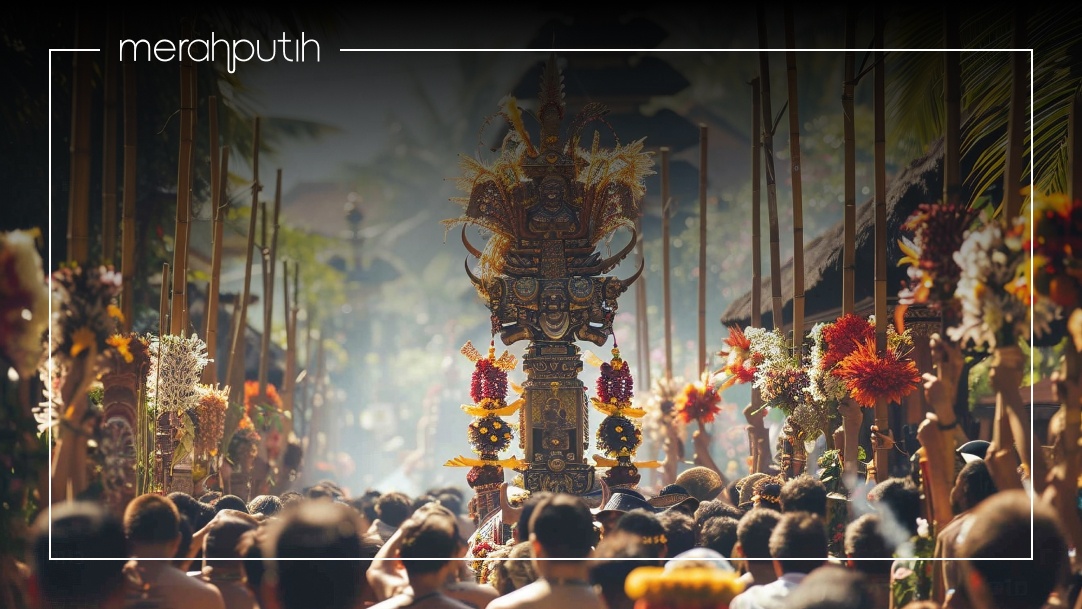Bali is more than just a paradise of sandy beaches and sprawling rice fields. It’s an island with rich history and culture, made up of people who are dedicated to their longstanding beliefs. When visiting Bali, whether as a tourist or as someone with business in mind, it’s helpful to understand the local cultures and traditions that matter greatly on the island. Coming into the island with respect for Balinese culture enables all parties to maintain harmony and balance, which are two things the Balinese highly value.
Before you set foot on the island of the gods, here is an overview of Balinese culture to guide you during your stay.
Balinese religion
As culture is an outward manifestation of beliefs, starting with an understanding of the Balinese religion is crucial.
The Balinese practice a religion called Tirta, which is Sanskrit for “holy water.” This belief is more commonly known as Balinese Hinduism, an adapted form of Hinduism from India with the addition of local animism and the worship of ancestors.
This belief pervades through every aspect of local life, guided by the principle of tri hita karana, which in essence places importance on man’s balanced connection with the gods, each other, and nature. Tri, meaning three, also results in groupings by three that governs everything from language tiers to village and housing layout.
Rituals, ceremonies, and offerings in Balinese culture
Once on the island, you will often find throngs of people heading to temples, mountains, or beaches in traditional wear. This is all part of Balinese rituals and ceremonies that are meant to purify and exalt what they believe as the six sources of wellbeing and happiness, also known as Sad Kerthi:
- Atma Kerthi: purification and exaltation of the soul
- Segara Kerthi: purification and exaltation of the sea and shore
- Danu Kerthi: purification and exaltation of water sources
- Wana Kerthi: purification and exaltation of plants
- Jana Kerthi: purification and exaltation of man
- Jagat Kerthi: purification and exaltation of the universe
Ceremonies are held at varying frequencies, during which time you may experience closures of roads and beaches. Music, dance, and chanting are also central to most of these rituals. Witnessing these ceremonies firsthand will give you a clear understanding of Balinese culture and how deliberate the locals are at observing every aspect.
Below are just some of the ceremonies and rituals that take place around Bali.
Melukat
Melukat is a ritual to cleanse the soul of any negative energies. This is done by water at temples or waterfalls and anyone can take part at any time.
Galungan and Kuningan
These two ceremonies go hand in hand and are observed within ten days of each other. Galungan itself is a celebration of the triumph of good over evil. Meanwhile, Kuningan is a day to worship the manifestation of Sang Hyang Widi or The Supreme God. It is said that this ultimate god comes down to earth to bless man with prosperity, strength, and wisdom. Galungan and Kuningan happen twice a year.
Nyepi
Also known as the Day of Silence, Nyepi takes place at the turn of the Balinese calendar year. This is observed once a year as a day of meditation, reflection, and connecting with god in order to sanctify oneself for the year ahead. During this time, the entire island stays in their homes in silence, and electricity and cellular service are cut. Even the international airport shuts down for Nyepi every year!
Melasti
Nearing Nyepi, the Balinese will head to the beach for Melasti. This is a ritual of purifying the body and the soul in preparation for the new year. Much like Melukat, Melasti also involves immersing oneself in water.
In addition to these, the Balinese also leave offerings for the gods daily. Canang Sari is a container made of the local leaf called janur, filled with flowers, incense, and a small portion of food. These are placed on the ground and symbolise man’s thanksgiving to The Divine Order. If you see Canang Sari around in Bali, make sure not to step on it, as this is considered a sign of disrespect.
Dressing in respect to Balinese culture
The clothing norms in Bali are more lax in beaches and touristy areas, but that all changes when you’re entering a temple or other sacred space. Those entering these premises are expected to dress modestly. This means covering up the chest, shoulders, and legs.
If you find yourself at a temple without proper clothing, don’t worry. You can rent a sarong at the entrance to cover up.
Related article: The Philosophical and Cultural Significance of Traditional Balinese Dress
The role of food in Balinese culture
For the Balinese, food is not just sustenance. It is also a part of the religious ceremonies believed to connect the to the gods and their ancestors. With ingredients and recipes passed down through generations, food is a part of Balinese culture that you shouldn’t miss during your visit.
Traditional Balinese food can be found around Bali in various kinds of establishments. You can enjoy it as a homecooked meal from a local warung, but it can also be elevated and enhanced for the fine dining setting.
At Merah Putih Restaurant, explore all that Balinese and Indonesian cuisine have to offer in a luxurious and intimate space. The menu features innovative dishes from all around the country, including the famed Balinese nasi campur and ayam betutu spiced chicken. Enjoy your meal with a choice of international wines and a local take on classic cocktails.
Book a table today and don’t miss out on exclusive gift vouchers.
FAQ
As a culture adapted from Hinduism, Balinese culture is known for its many religious ceremonies and rituals. These are observed for purification purposes and often involve music, dance, and chanting.
The Balinese observe a religion called Tirta, which means “holy water.” This is a form of Hinduism that mixes traditional Indian Hinduism with animism and a worship of ancestors.
One essential part of Balinese daily life is the offering Canang Sari. These offerings contain flowers, incense, and a small portion of food, and are set on the ground every day as a sign of thanksgiving. If you see a Canang Sari on the ground, be sure not to step on it, as it is considered disrespectful.
Balinese ceremonies are meant for purification and exaltation. Some of these rituals include:
– Melukat: purification by immersing oneself in water at a temple or waterfall
– Galungan and Kuningan: a celebration of the triumph of good over evil, followed by welcoming blessings from The Divine Order
– Nyepi: a Day of Silence commemorating the turn of the Balinese calendar year where the entire island shuts down for the day
– Melasti: a ritual to cleanse oneself before the new year

